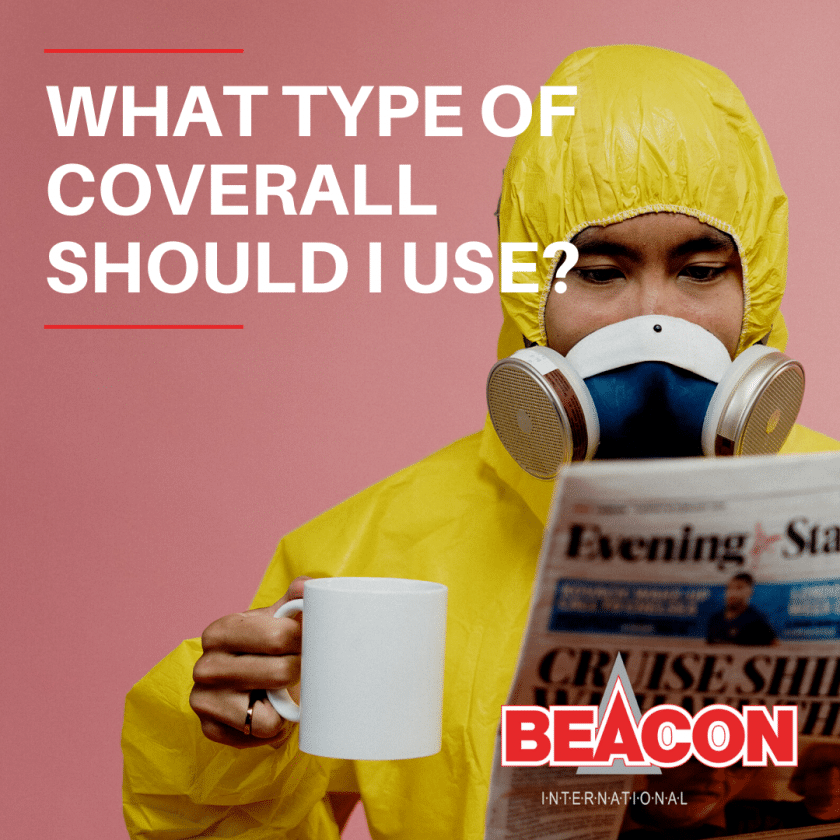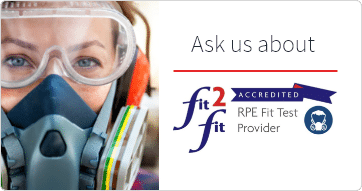No products in the basket.
What type of coveralls should I use to protect me against hazardous substances?
What type of coverall should I use?
There can be many reasons to use protective clothing, in particular the different types of coveralls. In most situations our bodies are effectively protected by our regular clothes and our skin. However, in some circumstances, we are subjected to environments and substances that are more harsh than day-to-day garments can offer protection against.
There are many ways in which a substance could be harmful to a person. For example, a solvent may enter the body through the skin and result in poisoning, or an airborne substance such as asbestos fibres may be inhaled and cause harm in the airways and lungs. Though airborne substances are often not directly harmful to the skin, they can be carried on top of clothing and skin and a disposable coverall acts as a barrier that can be removed to avoid this from happening.
Knowing which substances you are likely to encounter is the most important part of selecting your protective clothing type.
Read more about the HSE guidance on selecting the correct PPE here
What is a Coverall?
Protective suits, or ‘coveralls’ are items of disposable clothing that cover the wearers body in one, usually excluding the hands, feet and face. These excluded areas must be protected by other appropriate PPE or RPE, depending on which substances you are combatting.
The ankles, wrists and hood area are usually elasticated in order to create more of a seal and to keep harmful substances from entering the protective coverall.
Take a look at Beacon’s RPE options here
What are the different types of Coverall?
First, we will look at the range of EN Standards which coveralls come in, and discuss which harmful substances they protect the wearer against:
Category III: Protective clothing intended to protect against serious or fatal risks.
Type 6 & 6B: This type offers limited splash-proof protection. Protects the wearer when there is a risk of splashing on the suit, EN 13034. Type 6B protects against biologically contaminated particles, EN 14126.
Type 5 & 5B: This type protects against harmful substances, EN 13982 Type 5B protects against biologically contaminated particles, EN 14126.
Type 4 & 4B: These suits offer splash-proof protection, approved for the saturation of a liquid that can condense on the suit. The suits must have welded seams. Penetration testing has to be conducted according to EN 369 to provide information on protection in relation to individual chemicals, EN 14605. Type 4B protects against biologically contaminated particles, EN 14126.
Type 3 & 3B: These coveralls give liquid-proof protection, approved to withstand compressed fluids e.g. from hoses and nozzles. The suits must have welded seams. Penetration testing has to be conducted according to EN 369 to provide information on protection in relation to individual chemicals, EN 14605. Type 3B protects against biologically contaminated particles, EN 14126.
Type 2: This type gives limited gas-tightness. Suits prevent dust, liquids and vapours from penetrating at overpressure, EN 943.
Type 1: Gas-proof suits, fully sealed, EN 943.
EN 14126: Protects against biologically contaminated particles, EN 14126.
EN 1073-2: Protects against radioactive particle contamination in accordance with EN 1073-2 (not against radioactive radiation).
EN 1149-5: Electrostatic protection according to EN 1149-5 (with proper earthing).
Coveralls come in a range of materials, each with their own features and benefits:
Non-Woven: A non-woven fabric is a fabric whose fibres are completely unstructured, but are distributed so as to be uniform. This creates a dense structure which provides much better protection than a woven fabric could.
PP (Polypropylene): PP is a polymer that can be pulled into fibres and can be made into clothing. Polypropylene used for clothing is made from non-woven material which does not absorb moisture.
SMS/SMMS: These abbreviations stand for Spunbond-Meltblown-Spunbond polypropylene. This fabric consists of 3 layers with a 0.1 mm fibre structure in the middle that has been melt-blown into a dense structure. This creates a fabric barrier and is protected by a layer of spun-bonded PP on each side. SMMS or Spunbond-Meltblown-Meltblown-Spunbond is a fabric which consists of 4 layers, much like SMS but with an extra Meltblown core.
MF: This is a 2-layer fabric with a protective layer which is a microporous polyethylene film of 6-20 μm. The film is fixed to a base layer of non-woven fibres. If the film gets scratched or worn out, it will cease to protect the wearer.
TYVEK© 1431N: This fabric is made entirely of polyethylene fibres, which are pressed together using heat. This creates a unique 0.1 mm thick fabric with a uniform structure. Because of the effect of the heat, the surface of the fabric is completely smooth. The smooth surface prevents particles and fluids from accumulating on and penetrating the fabric & it is very strong and resistant.
TYCHEM® C: This material consists of Tyvek© 1431N with a polymer coating. The lightweight yet durable material provides good protection against hazardous particles and inorganic acids and bases.
TYCHEM® F: This material consists of Tyvek© 1431N with three added layers. A polymer coating, a Dupont© barrier film and finally a polymer coating. The creates a lightweight yet durable material which provides high protection against hazardous particles and inorganic and organic acids and bases.
TYCHEM® TK: The material provides high protection against gasses as well as fluid and solid chemicals. This is a three-layer material with 100% non-woven polyester in the middle, coated with a strong barrier film on both sides. The material is used for making suits approved for type 1 for gas tightness, type 2 for limited gas tightness and type 3 for chemical protection.
In order to be fully protected from the harmful substance that you are working with, it is vitally important that you equip yourself with the correct and full protective equipment. This will be different in each case, and should be assessed on an individual basis.
If you have any questions about the type of protective coverall you need, please don’t hesitate to get in touch
Browse Beacon’s range of protective equipment here




